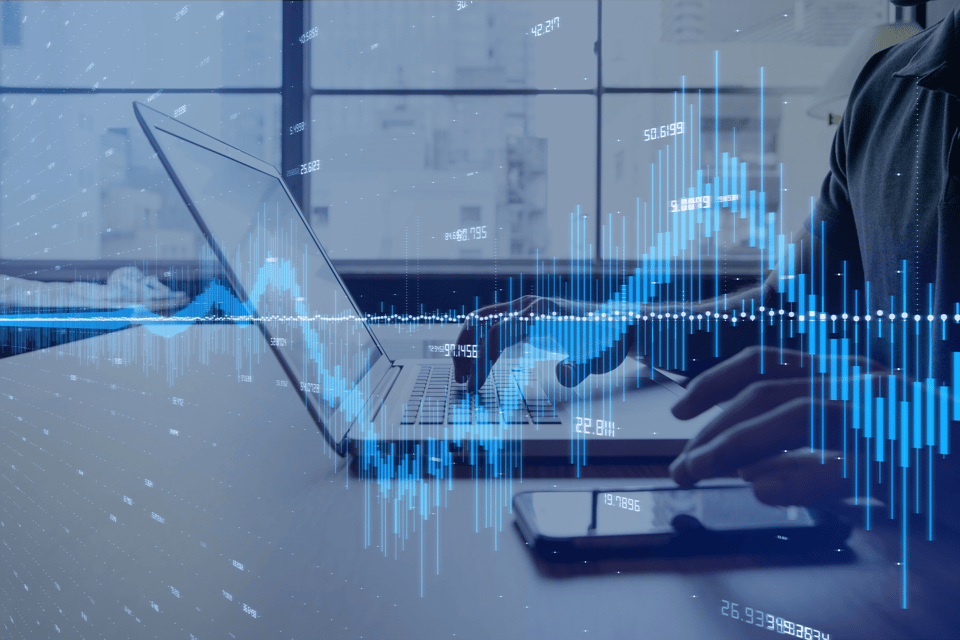If your strategy depends on technical analysis, then designing powerful futures trading charts is the name of the game. In this post, we’ll break down four key chart characteristics that contribute to a clear, concise, and timely study of price action.
1. User-friendly
For technical traders, the pricing chart is the foundation on which they make all trading decisions. A pricing chart’s essential function is to place evolving price action into a manageable context. To accomplish this task with the utmost efficiency, the strongest futures trading charts are user-friendly.
At its core, a chart’s usability is a function of two primary factors:
- Navigation: Being able to easily move around a charting application is an important part of its functionality. Opening and closing windows, adding and removing indicators, and changing markets and products must all be as routine as possible for the chart to be effective.
- Presentation: A pricing chart is a visual trading tool. Accordingly, an intuitive, attractive format greatly boosts its overall utility.
A user-friendly pricing chart is accessible and engaging. By being easily navigable and visually appealing, a powerful chart provides the trader with a conflict-free view of the marketplace.
2. Clutter-free
If you’ve ever sat in front of a trading screen, then you’re familiar with the high volume of information traders encounter during live market conditions. Quote boards, indicators, news feeds, and chat room dialogues are just a few items that bombard participants on a daily basis. Add in a period of extreme market volatility, and a once-controlled environment can become chaotic very quickly.
One element that robust futures trading charts have in common is that they are efficient. All extraneous information, indicators, and stimuli have been eliminated to create a streamlined picture of price action. That means if an element isn’t indispensable to your analytical approach, it shouldn’t appear on your chart.
3. Low-latency
The futures markets are rapidly evolving arenas that seldom stay the same for very long. Asset prices can change substantially in the blink of an eye. To stay competitive, an active trader’s charts must be responsive to changes.
Preserving a low-latency connection to the exchange is a key part of making sure your futures trading charts remain current. Here are a few basic ways to accomplish this objective:
- Upgrade to the most recent version of your software platform
- Perform regular hardware maintenance
- Periodically monitor connection speed with exchange and broker servers
If your charts are still experiencing undue latencies after taking these three steps, it may be time to seek an alternative for market connectivity. Commissioning the services of another broker or securing direct market access (DMA) are two ways of addressing any latency issues that may be plaguing your charts.
4. Strategically relevant
For most scientific studies, it helps to compare apples to apples. This is especially true in technical analysis: An ideal chart type will be needed to interpret price movements in a meaningful way. In other words, an effective chart is one that adds strategic value to the comprehensive trading plan.
To be strategically valuable, a chart must provide useful information for the crafting of trade-related decisions. As an example of this concept, assume that Cam the corn trader is planning to take an intraday reversal trade in December corn futures. For clues on when to execute the trade, Cam references a daily December corn line chart.
Any trades are educational examples only. They do not include commissions and fees.
Unfortunately for Cam, the line chart provides only a daily overview of pricing and overall market direction. This type of chart has a limited intraday trading strategic value—it would be more useful for a swing trade or long-term investment. A better choice for Cam would be an intraday OHLC, or candlestick chart, for December corn futures. When combined with select indicators, the OHLC will allow Cam to more effectively identify a precise entry point and enhance his chances of realizing a profit.



